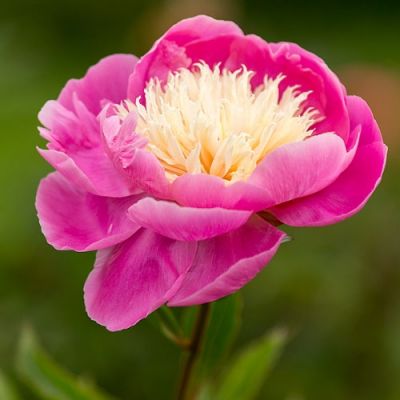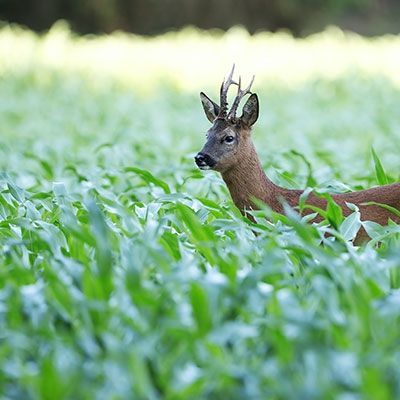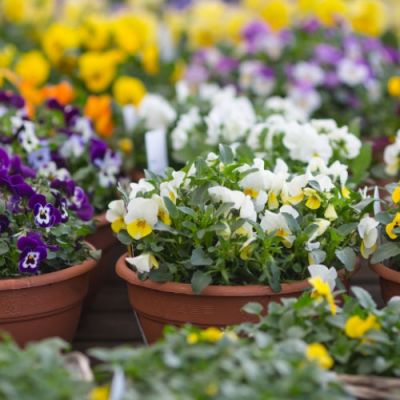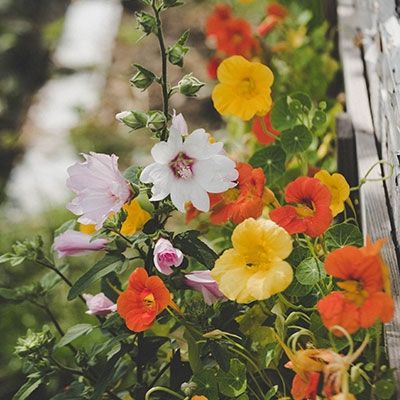06.2025 - June Gardening Tips

June brings warmth! Often the mercury rises to the point where (dare we say it!) it can be a little too warm for the gardener! Not for the garden though; in fact after several months of liquid sunshine the garden finally begins to benefit from some of the dry stuff! Everywhere we look there's a riot of colour, herbaceous plants are in full bloom and the first fruits of the year are almost ready for harvest.
The unmistakable smell of charcoal drifting on a warm breeze combined with heady floral scents signifies that June brings summer and that extended periods of time to spend outdoors are well on the way.
Make the Most of the Summer Solstice
This month brings us the Summer Solstice. This is the one day of the year when there are more sunlight hours than any other day. If you do anything on this day, then make sure you get outside and make the most of the extra light. It's good for the soul!
This month the garden really begins to reward those that have put in the hard work at the beginning of the season. Early peas, salad leaf, rhubarb and new potatoes should be just about ready to harvest.
Those of you who prefer colour in the garden should now be enjoying an abundance of floral colours and scents from verbascum through to lonicera (honeysuckle).
Note: If your honeysuckle's looking a little unwell, it could be due to mildew (symbolised by leaves turning yellow/patchy and dying); prevention is better than cure but if it looks too late to prevent then give it a spray with a fungicide.
Now is a super time to start thinning out those hardy annuals, you really need to be heavy handed though; the more you thin out at this time of year, the better roots, leaves and photosynthesis will be - which means bigger and better plants. Many gardeners will also give their gardens the 'Chelsea chop' at this time of year which encourages plants to bush out and give a better display later in the season. Those interested, should be able to find out more online.
The extra light and warmth this month will mean that everything grows a lot faster than usual, especially weeds. There really is no substitute for eliminating weeds by hand, however if you do find it necessary to use weed killers, then we would advise using them sparingly so as not to damage growing crops. Those of you with a lawn will find that there's no slowing its growth at this time of year and some of you may find yourselves mowing a couple of times a week to keep on top of growth. Remember to give your lawn a good rake through afterwards. This will not only remove any untidy grass cuttings that the mower may have missed but will also help remove thatch and moss.

Lift Spring Bulbs
Now's the perfect time to lift spring bulbs. Gently lift and store them so that they're ready for next year; any clumps that you are leaving in the garden can now be divided. Although many bulbs will continue to flower again and again each year without any intervention, it's a good idea to divide them every three to five years. This will ensure that no decline occurs from overcrowding. When dividing, remember that bulbs can often spread and be deeper than when they were first planted. With this in mind it's a good idea to start digging a few inches away from the plants and wait until the bulbs become loose. Don't pull on the leaves - you will damage the bulb and it may not flower the following year. Once divided, check the original bulb, if it's healthy replant it, if not throw it away.
Look Out For Pests
Don't let pests undo all your hard work. This month there's several pests to look out for as well as the usual suspects.
Remember to:
- Cover carrots with fine plastic mesh to prevent carrot fly.
- Dampen down greenhouses to raise humidity and prevent the spread of red spider mites.
- Pinch out the top of broad beans once the lowest flowers have set. This will prevent the likelihood of aphids attacking.
- Make sure you have adequate slug control measures in place.
- Keep your fruit netted and keep feeding birds from feeders. This will prevent them eating your crops and having birds in your garden should also control the population of slugs and snails.
- Look out for lily beetles, they're now on the march. The best way to deal with them is to remove them and dispose of them as you wish. Popular insecticides that destroy them, can also do damage to beneficial insects.
- Check the underside of plants for greenfly.

Natural Predation
If you find that you regularly have a pest problem then it's a good idea to encourage natural predation into your garden.
- Birds eat slugs, snails, grubs, wireworms, caterpillars and insects
- Hedgehogs eat slugs and snails, beetles and insects
- Frogs and Toads eat slugs, snails and various insects
- Ladybirds and lacewings eat aphids such as blackfly and whitefly
Ladybirds are one of our favourite little helpers, they help to keep insects and aphid numbers at bay. Incredibly, a seven spot ladybird can eat up to 5000 aphids during its year long life span. Anyone with roses or edible plants would be mad not to encourage them! Remember though, if you want to keep them in your garden then they will need a sacrificial crop to maintain their numbers (a clump of nettles often work) and somewhere to live.
Gardening Jobs for This Month
- Mow grass at least once a week to maintain its height.
- Dead head flowers on a regular basis to encourage plants to put their energy into producing more flowers.
- Prune red currants, white currants and gooseberries.
- Net cherries and other soft fruits to protect them from birds.
- Make sure that you have adequate methods in place to collect rainwater. Blueberries and cranberries like to be watered with rainwater wherever possible.
- Make sure you water everything thoroughly at least twice a week. Containers and hanging baskets should be watered every day, twice a day when the weather is hot and windy.
- Thin out pears, plums, nectarines, apricots and peaches. Apples can be thinned towards the end of the month.
- Pinch out the side shoots on tomatoes.
- Feed tomatoes and cucumbers regularly with a liquid feed. Make sure that tomatoes and peppers are watered at regular intervals to prevent blossom end rot.
- First early potatoes may now be ready for harvest. Flowering is a sign that tubers are developing. There's no need to uproot the plant and damage the root structure to see if your potatoes are ready; once flowers start to open, you can carefully feel around in the soil to see if tubers are big enough to eat. Keep earthing up potatoes that aren't ready to eat.
- Potatoes and tomatoes can now be sprayed with a protective fungicide as a preventative measure against blight. James Wong suggests that diluting an aspirin in water and spraying the solution on leaves can be a great alternative to fungicide; we have yet to try this ourselves though, so do so at your own risk.
- Plant out celery, celeriac and peppers once you're sure the risk of frost has passed.
- Harvest lettuce, radish and salad leaf.
- Plant out runner beans, they will quickly climb up their supports. If you haven't sown them yet, then there is still time, sow them now.
- Make sure you have adequate supports in for climbing plants and plants that have a tendency to flop. Check growth and make sure that the supports you have in place are tall enough to support further growth.
- Cutting back bergamot/monarda (bee balm) now will encourage later flowering. The flowers will have shorter stems but there will be heavier blooming.
- Many spring flowering shrubs can be pruned once they've finished flowering. rosmarinus (rosemary), evergreen berberis, cornus (winter flowering dogwoods), deutzia, magnolia, syringa (lilac), spiraea (bridal wreath), deciduous elaeagnus (oleaster), cytisus (broom) and bubbleja globosa to mention a few.
- Plant out summer bedding and put out hanging baskets.
- Now's a good time to create new border edges or tidy up existing ones.




